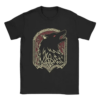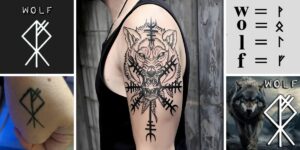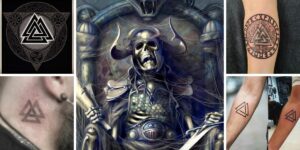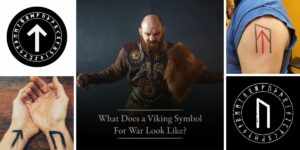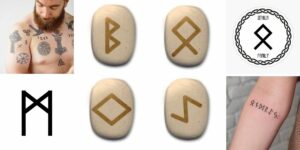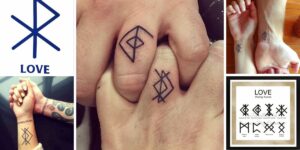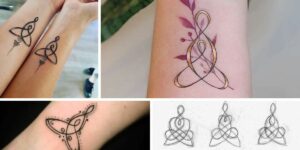Norse runes, the ancient writing system of the Vikings, carry profound cultural and spiritual significance. These symbols, used in the Elder Futhark alphabet, were not merely letters but held mystical meanings tied to Norse mythology. Among the many symbols revered in Viking culture, wolves stand out as powerful emblems of strength, loyalty, and destiny. The Nordic rune for wolf captures this essence, embodying the spirit of legendary creatures like Fenrir, Sköll, and Hati. Terms like Fenrir rune, Viking wolf rune meaning, and Nordic rune for wolf tattoo are often searched by those intrigued by Norse heritage. This article explores how wolves are represented in runes, their symbolic meanings, and their modern use in tattoos, offering a deep dive into their cultural resonance.
The Wolf in Norse Mythology
Wolves hold a prominent place in Norse mythology, symbolising both creation and destruction. The most iconic wolf is Fenrir, a monstrous creature destined to play a pivotal role in Ragnarök, the Norse apocalypse. According to legend, Fenrir’s immense power leads to his binding by the gods, only for him to break free and devour Odin during Ragnarök. This makes the Fenrir rune a symbol of untamed strength and inevitability. Other wolves, like Sköll and Hati, chase the sun and moon, embodying cosmic cycles. The Viking name for wolf, such as “úlfr” (pronounced “oolf-ur”), reflects the animal’s significance in Norse language and lore. Wolves were revered for their ferocity yet respected for their loyalty within packs, making them dual symbols of chaos and kinship in Viking culture.
>>> Fenrir: The Giant Wolf of Ragnarok Prophecy
How to Write ‘Wolf’ in Elder Futhark Runes
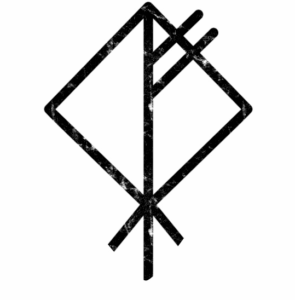
The Elder Futhark, the oldest runic alphabet used by Germanic tribes from the 2nd to 8th centuries, is the foundation for writing Norse rune words. To write “wolf” in Elder Futhark, the word “úlfr” is transliterated into runes. Based on reliable sources, the correct runic spelling is typically ᚢᛚᚠᚱ (Ansuz, Laguz, Fehu, Raidho). Each rune carries its own meaning: ᚢ (Uruz) represents strength, ᛚ (Laguz) signifies flow or water, ᚠ (Fehu) denotes wealth or prosperity, and ᚱ (Raidho) suggests a journey. Some variations, like ᚹᛟᛚᚠ (Wunjo, Othala, Laguz, Fehu), appear in modern interpretations but are less historically accurate. Common mistakes include using incorrect runes due to phonetic assumptions or modern alphabets. Always consult primary sources or experts to ensure accuracy when exploring the Nordic rune for wolf.
The Symbolism of Wolf Runes
The wolf bindrune meaning extends beyond mere letters, encapsulating the spiritual essence of wolves in Viking culture. A bindrune combines multiple runes into a single glyph, amplifying their meanings. For example, combining ᚢ (Uruz) and ᚠ (Fehu) might symbolise strength and prosperity, reflecting a wolf’s dual nature as a fierce yet protective creature. In Viking beliefs, wolves represented raw power, often linked to warriors, but also loyalty, as seen in their pack mentality. The Viking wolf rune meaning often ties to protection, courage, and destiny, resonating with those who feel a connection to these qualities. Runes associated with wolves may also evoke Fenrir’s role in Ragnarök, symbolising inevitable change or transformation, making them powerful talismans in Norse tradition.
>>> Fenrir in Runes: Symbols, Tattoos and Norse Writing
Nordic Wolf Rune Tattoos & Modern Use

The Nordic rune for wolf tattoo has surged in popularity, driven by fascination with Viking aesthetics and Norse mythology. These tattoos often feature the runic spelling of “úlfr” (ᚢᛚᚠᚱ) or a bindrune combining wolf-related runes. Designs vary from minimalist single runes to intricate bindrunes incorporating symbols like ᚢ (Uruz) for strength or ᛉ (Algiz) for protection. The wolf rune tattoo meaning often reflects personal values like resilience, loyalty, or spiritual transformation, inspired by Fenrir’s legacy. However, historical accuracy is debated—while runes were used in carvings, there’s little evidence of runic tattoos in Viking times. Modern enthusiasts should approach designs with cultural respect, consulting reputable sources and avoiding appropriation. Choosing a Nordic rune for wolf tattoo should involve understanding its symbolism and ensuring the design honours Norse heritage.
>>> Viking Tattoos for Men with Meaning: Symbols, Strength, and History
Conclusion
The Nordic rune for wolf is more than a linguistic symbol; it’s a gateway to the rich tapestry of Norse mythology, embodying the strength, loyalty, and destiny of wolves like Fenrir. From their role in ancient legends to their modern revival in tattoos, wolf runes continue to captivate those drawn to Viking culture. Whether you’re exploring the Fenrir rune, seeking the Viking wolf rune meaning, or considering a wolf rune tattoo, these symbols offer a profound connection to the past. Share your thoughts or tattoo designs inspired by wolf runes in the comments below, and dive deeper into the world of Norse symbolism to uncover more of its mysteries.
Nordic Rune for Wolf: Symbols, Meanings & Viking Connections
Table of ContentsThe Wolf in Norse MythologyHow to Write ‘Wolf’ in Elder Futhark RunesThe Symbolism
Jul
Norse Symbols for Death: Exploring Viking Runes, Deities, and Iconic Imagery
Table of ContentsThe Wolf in Norse MythologyHow to Write ‘Wolf’ in Elder Futhark RunesThe Symbolism
Jul
Nordic Rune for War: Powerful Viking Symbols of Strength and Victory
Table of ContentsThe Wolf in Norse MythologyHow to Write ‘Wolf’ in Elder Futhark RunesThe Symbolism
Jul
Nordic Rune for Family: Ancient Symbols of Love, Strength, and Unity
Table of ContentsThe Wolf in Norse MythologyHow to Write ‘Wolf’ in Elder Futhark RunesThe Symbolism
Jun
Nordic Rune for Love: Symbols, Meanings & How to Use Them
Table of ContentsThe Wolf in Norse MythologyHow to Write ‘Wolf’ in Elder Futhark RunesThe Symbolism
Jun
Nordic Symbol for Mother and Son: A Deep Dive into Meaning
Table of ContentsThe Wolf in Norse MythologyHow to Write ‘Wolf’ in Elder Futhark RunesThe Symbolism
1 Comment
Jun


